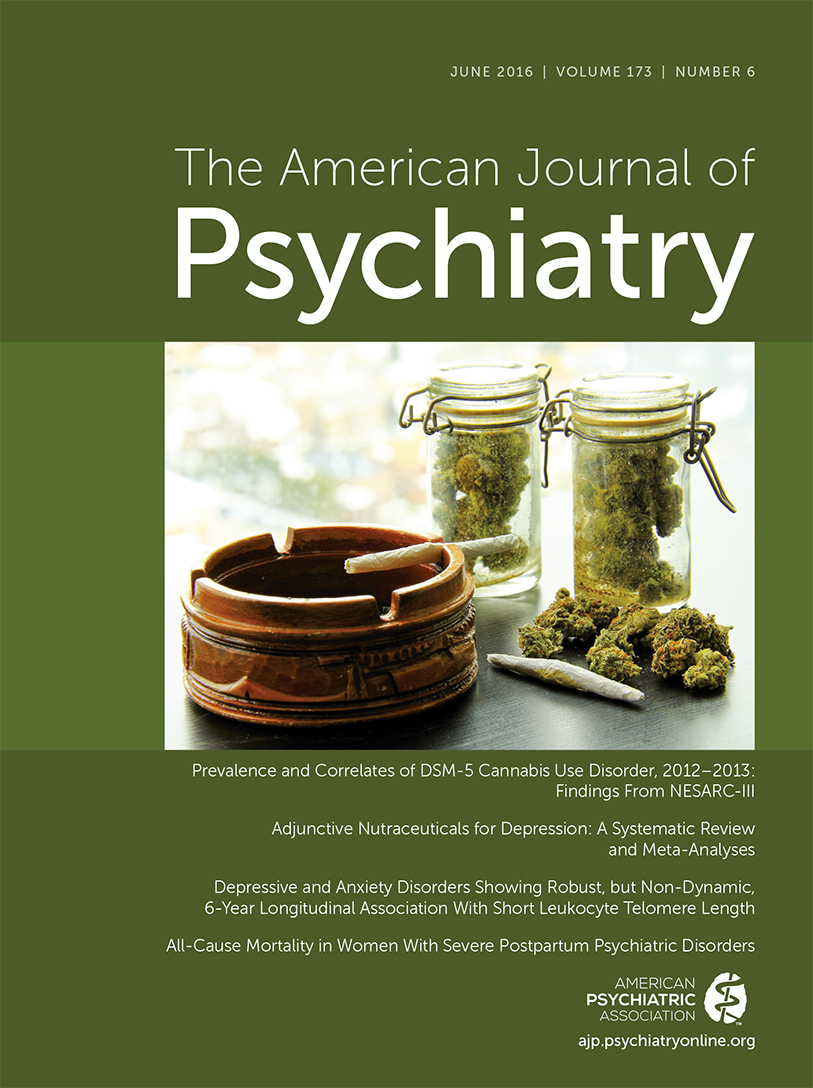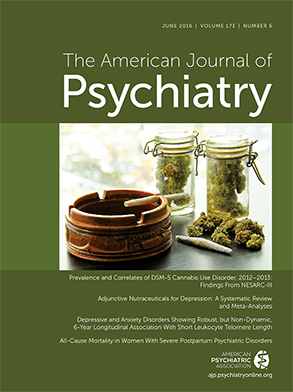The article by Yovell and colleagues in the May issue (
1) points to the potential use of low doses of a buprenorphine, a mu-opioid partial agonist, to decrease suicidal ideation in psychiatric patients. The findings are in keeping with earlier work of Bodkin et al. (
2), who found that buprenorphine could provide relief to patients with refractory depression, and the more recent work of Ehrich et al. (
3), who found that buprenorphine in combination with a mu-opioid antagonist—samidorphan—may be effective in refractory major depression. The Yovell et al. data are intriguing on several counts. For one, they offer a possible approach to helping acutely suicidal patients, particularly those with borderline personality disorder, for whom we have little in the way of effective treatments. For another, they point to a possible role for opioids in the treatment of depressed or suicidal patients, particularly those whose illness has been refractory to standard therapy. The latter is in some ways encouraging but presents a number of important issues that we need to address for the sake of our patients, our profession, and the society at large.
In these pages, the concern has been raised that the rapid benefits of intravenous ketamine might reflect its mu agonist properties and that ultimately could pose problems for our patients and the field (
4). The present report that low oral doses of a mu partial agonist results in relief of suicidal ideation only reinforces our need to begin to address a number of issues that will arise from the use of potential drugs of abuse to treat psychiatric disorders.
As Yovell et al. remark, opioids were commonly used for the treatment of depression before the introduction of effective antidepressant agents, and they were abandoned in favor of effective agents that did not connote risk for addiction. And for many of our patients, these second-generation agents have provided great relief of suffering. Unfortunately, many patients do not respond to them, and suicide remains a major public health problem on which we have made little progress. Some compounds with abuse potential offer considerable acute relief, much as an opioid would help postoperative pain. The problem is that patients generally require ongoing therapy, and with that comes the potential risk of dependence, withdrawal, and other ill effects. We have already witnessed this with the epidemic opioid use often stemming from legitimate medical uses (
5). In the Yovell et al. study, withdrawal symptoms were not formally evaluated, although they were not elicited after 4 weeks, and the buprenorphine dosages used were very low, ranging from 0.2 to 0.8 mg/day. But what of patients who require higher dosages or for longer periods in maintenance treatment? Are we putting patients at risk for addiction with longer-term use at higher dosages? If so, can we justify this approach in some patients, much as we would in a terminally ill patient? Can guidelines be promulgated to help here? Does the potential use pose a threat to the society at large because of diversion to others? What is the relative risk-benefit ratio for an individual patient versus for the society at large?
Some of the potential risk may be mitigated by the approach one company has pursued that involves combining buprenorphine with samidorphan (
3). This approach may limit the risk of dependence and withdrawal and may reregulate the opioid system by combining a so-called driver with a brake. Another potential mechanism here may involve kappa antagonism properties of buprenorphine that may emerge more clearly after blocking the drug’s mu partial agonism when combining it with a mu antagonist. Kappa receptor agonism itself is thought to be depressogenic. Clinical trials are under way to address efficacy and safety of the buprenorphine-samidorphan combination approach.
What do the findings of Yovell et al. tell us regarding the opioid system in major depressive disorder and borderline personality disorder? We know that endogenous opioids play key roles in the modulation of physical pain but also in social rejection, a clinical dimension of particular relevance in borderline personality disorder. Zubieta’s group (
6,
7) has elegantly described alterations in basal opioid activity in borderline personality disorder or major depression using positive emission tomography (PET), and their findings suggest that activity of the system may not be entirely homologous across the two disorders. For one, basal activity is relatively high in borderline personality disorder and low in major depression. Moreover, the two groups may differ in response to social rejection stress, with depression patients demonstrating relative blunting of the opioid response (
7). The Yovell et al. data suggest greater response in patients with borderline personality disorder, although the relatively small number of subjects with major depression may account for the differences. Study of buprenorphine directly in refractory major depression without borderline features and rejection sensitivity across disorders would be useful, as would be PET changes with the drug to determine the role the system plays in suicidal ideation and other dimensions. Study in patients of the drug’s known effects on the hypothalamic-pituitary-adrenal axis would be of interest as well.
Where do we go from here? Buprenorphine is a class III controlled substance, and many practitioners will be reluctant to treat patients with it. There is a need for replication of these findings with study in both borderline personality disorder and major depression. However, as we have witnessed with ketamine infusion centers sprouting up, the drug will be prescribed by some practitioners and will likely be used by more over time. The field needs to study the use of the drug not only acutely but over the long term to assess efficacy and safety before it is widely adopted. Abuse liability in particular needs to be assessed, and any predictors of such behavior need to be determined. The potential gain of some patients versus the overall societal cost need to be addressed, and guidelines need to be promulgated for any such use. The issues raised previously in these pages about where the use of ketamine could lead (
4), particularly out of concern for its abuse liability, long-term risks, and social cost, are already beginning to confront us for another agent of potential abuse. The time has come for the specialty and regulators to begin to formally address the issues associated with the potential off-label use of drugs of potential abuse for severely ill and refractory patients. Issues regarding opioid use for depression were mitigated largely by the introduction of effective antidepressants half a century ago, but we are now being forced to face them again, largely because of the unmet need of many patients with refractory depression and suicidal ideation. This is truly going “Back to the Future.”

